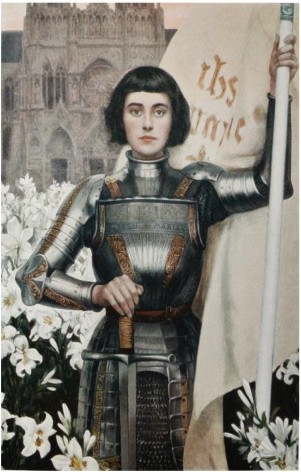1260 Thomas Aquinas, a sage of scholasticism, proves that authorities agree even when they don't. In the 14th century, Realists (“reality is Platonic forms”) and Nominalists (“reality is what we sense”) challenge Aquinas’ argument that god is inscrutable.
1381 Lollardy is a religion of vernacular scripture. Lollards oppose many practices of the Catholic Church. These followers of John Wycliff believe that the bible is the only valid source of doctrine and pertinent measure of legitimacy." They do not believe the church practices of baptism and confession are necessary for salvation. They consider praying to saints and honoring their images to be a form of idolatry. Oaths, fasting, and prayers for the dead are thought to have no scriptural basis. They have a poor opinion of the trappings of the Catholic Church, including holy bread, holy water, bells, organs, and church buildings. They reject the value of papal pardons. Special vows are considered to be in conflict with the divine order established by Jesus and are regarded as anathema. They are opposed to pilgrimages and saint worship, they deny the doctrine of transubstantiation, and demand an English translation of the Scriptures.
 1431 Joan of Arc, born a peasant at Domremy in northeast France, is considered a heroine of France for her role during the Hundred Years’ War. Joan claims to have received visions of the Archangel Michael, Saint Margaret, and Saint Catherine of Alexandria instructing her to recover France from English domination. The unanointed King Charles VII reluctantly sends Joan to the Siege of Orleans as part of a relief army. She gains prominence when the siege is lifted only nine days later. Several additional swift victories lead to Charles VII's consecration at Rheims. This paves the way for the final French victory.
On 23 May 1430, she is captured by Burgundians. She is sold to the English after Charles VII refuses to ransom her, put on trial by the Inquisitor of North France Jean Lemaitre for witchcraft because she wore male clothing, and burnt at the stake at about nineteen years of age.
Her attribution of Divine Guidance annoys Church leaders, but she is finally canonized in 1920, though as late as 1902, Papal Consistors cite her capture as proof that her claims that she was sent by God are false, and refuse to place her in the Calendar of Saints.
~~~~~~~~
1431 Joan of Arc, born a peasant at Domremy in northeast France, is considered a heroine of France for her role during the Hundred Years’ War. Joan claims to have received visions of the Archangel Michael, Saint Margaret, and Saint Catherine of Alexandria instructing her to recover France from English domination. The unanointed King Charles VII reluctantly sends Joan to the Siege of Orleans as part of a relief army. She gains prominence when the siege is lifted only nine days later. Several additional swift victories lead to Charles VII's consecration at Rheims. This paves the way for the final French victory.
On 23 May 1430, she is captured by Burgundians. She is sold to the English after Charles VII refuses to ransom her, put on trial by the Inquisitor of North France Jean Lemaitre for witchcraft because she wore male clothing, and burnt at the stake at about nineteen years of age.
Her attribution of Divine Guidance annoys Church leaders, but she is finally canonized in 1920, though as late as 1902, Papal Consistors cite her capture as proof that her claims that she was sent by God are false, and refuse to place her in the Calendar of Saints.
~~~~~~~~
 1431 Joan of Arc, born a peasant at Domremy in northeast France, is considered a heroine of France for her role during the Hundred Years’ War. Joan claims to have received visions of the Archangel Michael, Saint Margaret, and Saint Catherine of Alexandria instructing her to recover France from English domination. The unanointed King Charles VII reluctantly sends Joan to the Siege of Orleans as part of a relief army. She gains prominence when the siege is lifted only nine days later. Several additional swift victories lead to Charles VII's consecration at Rheims. This paves the way for the final French victory.
On 23 May 1430, she is captured by Burgundians. She is sold to the English after Charles VII refuses to ransom her, put on trial by the Inquisitor of North France Jean Lemaitre for witchcraft because she wore male clothing, and burnt at the stake at about nineteen years of age.
Her attribution of Divine Guidance annoys Church leaders, but she is finally canonized in 1920, though as late as 1902, Papal Consistors cite her capture as proof that her claims that she was sent by God are false, and refuse to place her in the Calendar of Saints.
~~~~~~~~
1431 Joan of Arc, born a peasant at Domremy in northeast France, is considered a heroine of France for her role during the Hundred Years’ War. Joan claims to have received visions of the Archangel Michael, Saint Margaret, and Saint Catherine of Alexandria instructing her to recover France from English domination. The unanointed King Charles VII reluctantly sends Joan to the Siege of Orleans as part of a relief army. She gains prominence when the siege is lifted only nine days later. Several additional swift victories lead to Charles VII's consecration at Rheims. This paves the way for the final French victory.
On 23 May 1430, she is captured by Burgundians. She is sold to the English after Charles VII refuses to ransom her, put on trial by the Inquisitor of North France Jean Lemaitre for witchcraft because she wore male clothing, and burnt at the stake at about nineteen years of age.
Her attribution of Divine Guidance annoys Church leaders, but she is finally canonized in 1920, though as late as 1902, Papal Consistors cite her capture as proof that her claims that she was sent by God are false, and refuse to place her in the Calendar of Saints.
~~~~~~~~